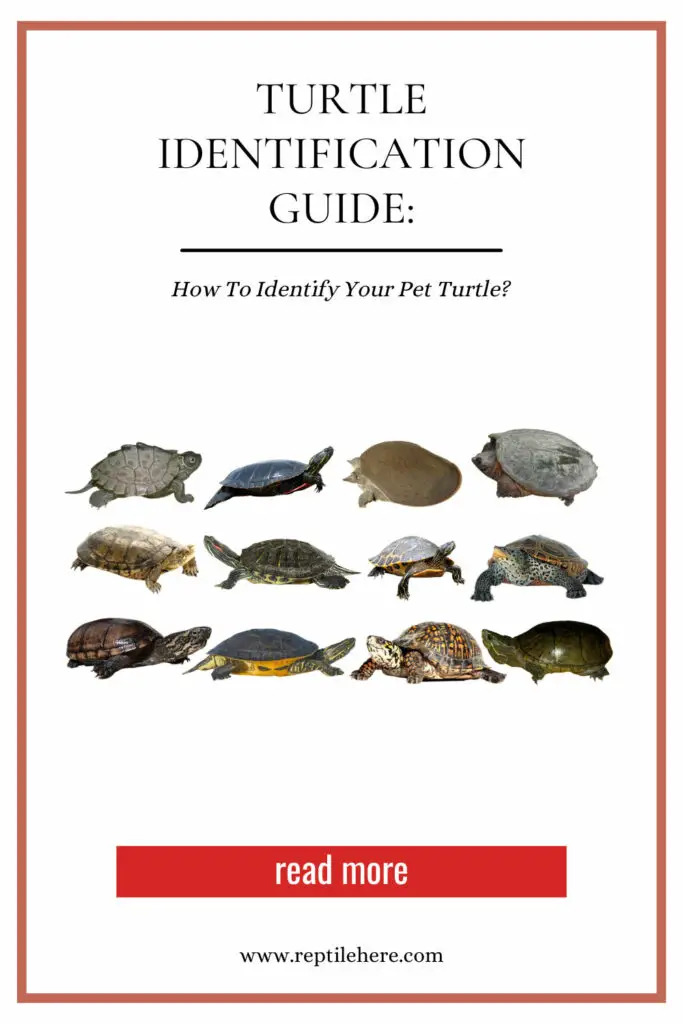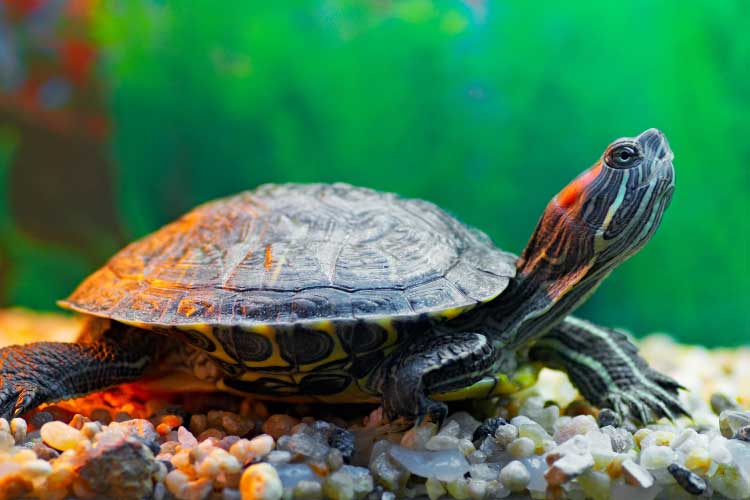Turtle Identification Guide: How To Identify Your Pet Turtle?
If you recently acquired a pet turtle, you’ll need to know what species it is so you can give it the best possible care. However, with 350+ turtle species available, identifying a turtle won’t be easy for you. Luckily, this guide will show you how to easily tell what type of turtle you have.
How to identify your pet turtle? The easiest way to recognize your pet turtle is by looking at key identifying features such as its skin color and markings, shell shape and pattern, feet, head, body size, neck, tail, environment, and behavior.
The following guide offers you more in-depth details about turtle identification. We’ll teach you how to tell apart freshwater, land, and sea turtles. As a bonus, we’ll also discuss how to identify your turtle’s gender, age, and so much more.
How can I tell what kind of turtle I have?
Contents
The ability to identify your turtle is important as it helps you identify the next steps to follow whether you’re relocating, rescuing, or simply want to give the best care to your turtle.
Luckily, you can quickly tell whether your turtle is an aquatic, sea, or land turtle by just looking at it. However, knowing the exact species of the turtle is where the challenge lies.
Thankfully, the varying species have special features that make them easily identifiable. You can recognize what species your pet turtle is by checking the feet, skin color and markings, turtle shell shape and pattern, size, neck, tail, and so on.
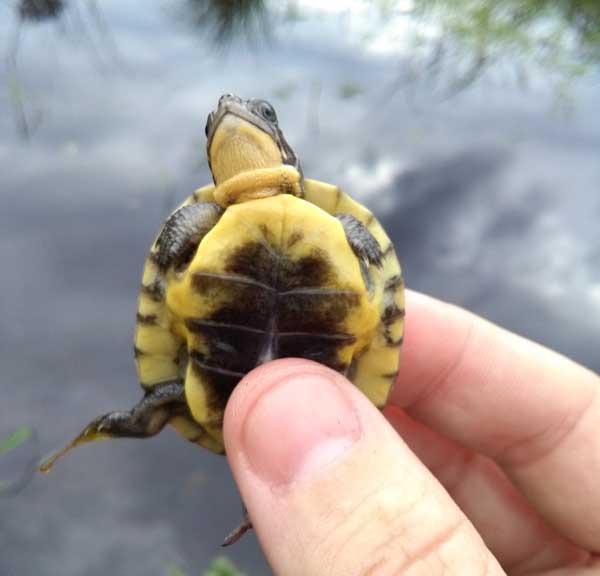
For instance, the red-eared slider, one of the most popular pet species is identifiable by these key identifying features:
- Red patch behind their eyes
- Yellow plastron
- Yellowish-green top shell
- Yellow lines run down the scutes
- Each scute features a dark blotchy mark
- The head, neck, and legs are usually green with yellow stripes.
- And The total number of stripes on its neck is always less than 16.
Follow our simplified guide below to easily identify what kind of a pet turtle you have:
Step 1. Check the shell
If the carapace is soft and has no scutes, then your pet is a softshell turtle. Softshell turtles are the only turtle that lacks scutes and features soft, leathery shells instead.
If the carapace is hard, go to step 2.
Step 2. Check the turtle plastron
If the plastron is small and doesn’t entirely cover the turtle’s underside (has a cross-shaped appearance), then you’re looking at a snapping turtle. This turtle species also features a long, saw-like tail.
If the plastron almost covers or completely covers your turtle’s body, go to step 3
Step 3. Check the scutes on the shell
If the total number of scutes adds up to 11, go to step 4
If the total number of scutes adds up to 12, go to step 5
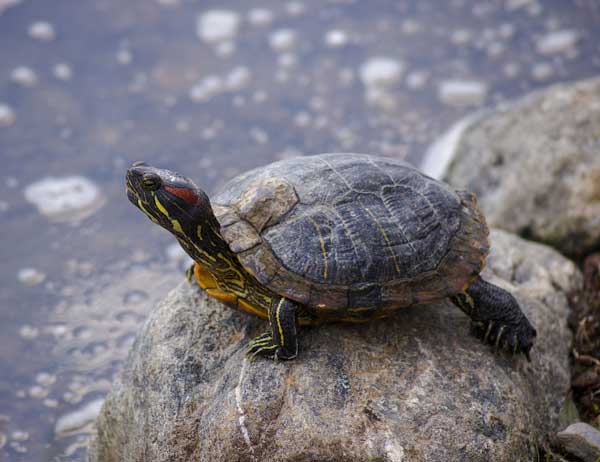
Step 4. Check the petrol scutes on the plastron
If the turtle has squarish pectoral scute and there exists visible skin between its scutes, then it is a musk turtle.
If your turtle has triangular pectoral scute, and there exists no visible skin between scutes, then it is a mud turtle.
Step 5. Have a look at its feet
If your turtle’s feet aren’t webbed and it has a hinged plastron to enable the turtle to be totally enclosed in its shell, and the scutes are 12 in total, then your pet is an eastern box turtle.
If your pet turtle toes are webbed but no hinged plastron, go to step 6.
Step 6. Does the turtle have a keel?
If the turtle top shell doesn’t have a central keel featuring a pyramidal pattern of ridges and grooves, go to step 7.
Also, check the tail to confirm the turtle isn’t a hatchling. If the turtle’s tail is shorter than the top shell, go to step 7.
If your turtle has a central keel that’s made up of pyramidal pattern of ridges and grooves, then your pet is a wood turtle.
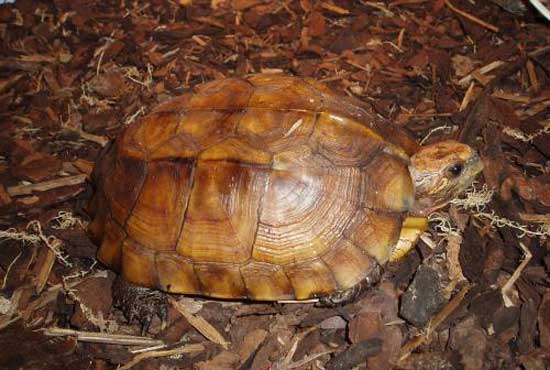
Additional features of wood turtles include a yellow plastron with black spots situated at the corners of scutes underneath it. Also, its tail has the same length as its carapace.
Step 7. What’s the neck length?
If your turtle’s head and neck extend to become as long (or even longer) than its plastron, then you’re looking at a chicken turtle.
If your turtle’s head and neck extended length falls short of its plastron, then your turtle isn’t a chicken turtle species.
Step 8. Take a closer look at the carapace
Does the carapace feature brown centric rings and concentric grooves on its scutes?
If yes, then your pet could be a terrapin or a diamondback terrapin. This turtle also features several black spots on its soft greyish skin covering its neck, head, and legs.
If the carapace doesn’t exhibit the above features but its legs are stripped or have no marks, check for additional carapace features below:
Does it (the carapace) have a saw-like vertebral keel and a serrated edge? If yes, your pet turtle could be a map turtle, though a red-eared slider also features serrated edges.
If the carapace appears smooth and not serrated, then it could be a spotted turtle, an eastern painted turtle, or even a bog turtle. Go to step 9 for more details.
Step 9. Examine the jaws
If your turtle has notched upper jaw with small cups on each side, in addition to reddish-orange lines across its carapace, then it’s an eastern painted turtle.
If the above jaw features are absent and your turtle features a spotted carapace instead, look at the carapace again for more details.
If the carapace has no keel and is black with white or yellow spots, then it could be a spotted turtle. This turtle also features an orange patch underneath its eye.
But if the carapace features a keel, and is brown in color with no markings, then you could be looking at a bog turtle. Additional features of this turtle include a reddish-orange spot on its head and neck.
Step 10. Count the number of stripes on your turtle’s neck and head
If the stripes are over 15 on the neck and head and there exists a small patch behind the eyes, then your pet is a map turtle. Lines on the carapace resembling contours also indicate a map turtle.
If the stripes are fewer than 16, your turtle could be a Cooter or slider. Sliders and Cooters are a bit challenging to tell apart.
But one key factor to keep in mind is that the Cooters’ head and neck have yellowish-white stripes and their posterior marginal scutes are not notched midpoints.
As for the sliders, they feature a midpoint notch at their posterior marginal scutes.
Both Cooters and sliders are unlike other aquatic turtles in that they’re bigger in size. They can reach shell lengths of over 12 inches!
How do you tell an aquatic from a land turtle?
You can tell an aquatic turtle from a land turtle by inspecting its feet. If the turtle has webbed feet, then it’s an aquatic species and spends most of its time in the water.
Aquatic turtles are also generally smaller than other turtles and feature fairly flat shell shapes.
Land turtles, on the other hand, lack webbed feet. Instead, they have claws that they use for digging on land.
However, snapping turtle is a special case as it has both claws (on their front legs) and webbed feet (back feet) and is easily recognized by their hooked jaws.
While still at it, box turtles, which spend more time on land can be categorized as land turtles. They usually have a dome-shaped shell which they easily retreat into if they feel threatened.

Box turtles are pretty colorful and feature bright orange or yellow markings on their shells.
Still at it, some people may have a hard time differentiating a land turtle from a tortoise.
Tortoises are exclusively terrestrial and will never go to the waters. They’re recognized by their high dome shells which are generally less streamlined and heavier.
You can differentiate a turtle from a tortoise by checking its feet (they usually feature short and elephantine legs). When on the move, tortoises use their toes to walk. But a land turtle walks on the flat of its feet.
How do you identify sea turtles?
Sea turtles are most probably the easiest to identify by inspecting their feet. These turtles usually have their front limbs come shaped like flippers. They also feature bigger body sizes.
But you’ll need to look at even more physical features to help you identify the individual species of sea turtle you’re looking at.
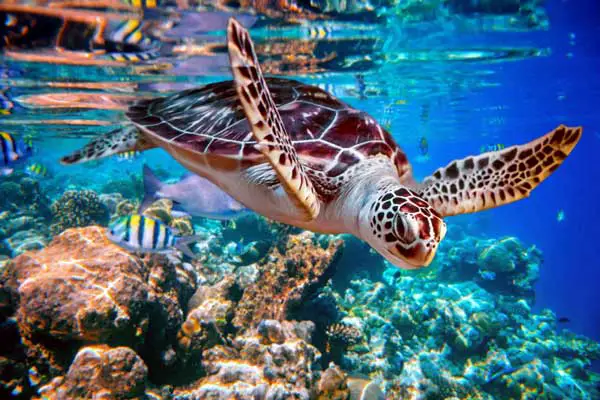
Here’s how to identify each sea turtle species:
- Leatherback Sea Turtle: If a sea turtle doesn’t have scutes, then it’s a leatherback sea turtle. These turtles are usually dark grey and have thick, leathery skin. They’re also the biggest of all sea turtles.
- Hawksbill Sea Turtle: As you can tell from its name, this turtle has a sharply pronounced beak/mouth. It usually features two pairs of scales between its nose and eyes. Regarding the scute pattern, it has 4 pairs of lateral scute plus one triangular 1st vertebral scute and the head features 2 pairs of prefrontal scales.
- Green Sea Turtle: This turtle features only one pair of scales between its nose and eyes. And unlike its close relative, the hawksbill, it doesn’t feature a hooked beak. This turtle also 4 pairs of lateral scutes plus one triangular 1st vertebral scute and the head features a pair of prefrontal scales.
- Loggerhead Sea Turtle: This turtle boasts its place as the world’s largest hard-shelled species of turtle. It features a dark brown, keeled top shell. Males usually have longer claws and tails than their female counterparts. Loggerhead sea turtle has 5 pairs of lateral scutes plus one squarish 1st vertebral scute.
- Kemp’s Ridley Sea Turtle: This is the smallest of the marine turtles and has a grey-green skin and shell (the shell looks almost circular). However, this is the rarest of sea turtles and it will take a lot of luck to come across one of its kind. If the turtle has 6 or more pairs of lateral scutes plus a squarish 1st vertebral scute, then it’s a Kemps Ridley sea turtle
We found this helpful sea turtle identification key that simplifies the entire sea turtle species identification process for you.
Is there an app to identify turtles?
Given how challenging the identification exercise is, a turtle identifier app will definitely be a heaven-sent tool for you, right?
Unfortunately, there doesn’t seem to be such an app available.
The only thing we found closer to such an app is the TURT app. This turtle app was aimed at enabling scientist-citizens to log their sea turtle sighting during their recreational activities, e.g. SCUBA or snorkeling tours.
The citizens simply send photos of the sea turtles they spot via the app. Researchers then use photo ID programs to identify the turtle. This crucial info helps in marine turtle research and even conservation.
Maybe you should take up this idea and create an app to help turtle owners quickly identify an app and make their life easy?!
How do you identify a baby turtle?
Baby turtles are usually a challenge to nail down their species. It gets even more complicated if you don’t baby turtle identification pictures & chart to check from.
You can’t rely on size to identify them as some turtles are so small that you can mistake them for baby turtles.
Instead, focusing on the adult size will make it easier to identify the baby turtle species.
That said, you can tell what type of baby turtle you have by checking the key identifying features of their adult counterparts we discussed earlier.
This comes from the fact that most baby turtles come as miniature versions of their adult counterparts.
For instance, you can identify baby snapping turtles by checking if they have a cross-shaped plastron and a long saw-like tail—just like an adult snapping turtle.
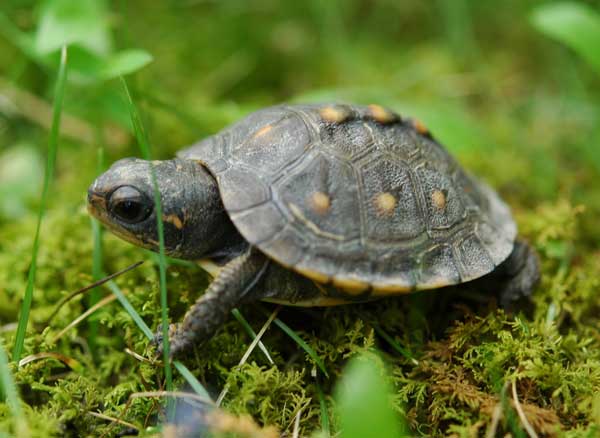
Similarly, a baby box turtle will have the same identifying features as an adult box turtle.
A freshly hatched turtle is even easier to identify as it features a sharp tooth on its nose, usually referred to as egg tooth. However, this tooth usually falls off after the hatchling hits 6 weeks old.
It’s also worth noting that baby turtles have brighter patterns and colors than their adult relatives. They also tend to feature less scarring.
How do you tell if your turtle is male or female?
Knowing your turtle’s gender is also part of your turtle identification process and will further help improve the care you give your pet.
Besides, it helps you find a mate or know what gender to pair your turtle with.
To determine if your turtle is male or female, check its key features such as the tail, plastron shape, shell length, coloration, and the size of claws.
However, the most common way of determining a turtle’s gender is by looking at its tail length:
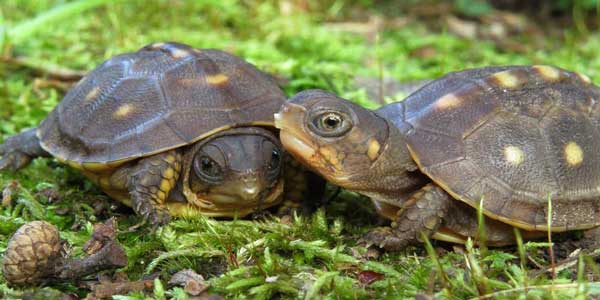
Males have thick, long tails while females have skinny and shorter tails. The cloaca/vent in males is positioned near the tip of the tail compared to females.
Here’s a quick turtle gender identification chart to help you out:
| Male Turtle Identification | Female Turtle Identification |
| Smaller (around 4 inches) | Larger (around 6-7 inches) |
| Concave shaped plastron | Flat shaped plastron |
| Darker coloration | Lighter coloration |
| Longer front claws | Short and stubbly front claws |
| Long and thick tail | Short and skinny tail |
FAQs:
You can easily identify your painted subspecies by focusing on its key distinctive features such as markings and appearance.
Follow these quick tips for easy painted turtle subspecies identification:
- Eastern painted and midland painted turtles top shells are olive to dark brown.
- Eastern subspecies shell is boarded by orange or yellow-orange band while midland subspecies margin scutes feature red to dark-orange borderline.
- Western painted turtle top shell varies from olive to dark green with a bright plastron covered with black blotched marks.
- Southern painted turtle features a solid yellow plastron plus solid color lines in the middle of its top shell.
The easiest way to identify a slider is by checking its size. The pond slider is the only species in North America capable of reaching a shell length of over 12 inches.
Not all turtles have 13 scutes but most of them do. Generally, the number of scutes in different turtle species ranges from 11 to 13 main scutes which are easily countable and help in turtle species identification.
Final Verdict
Identifying what species your pet turtle is can be challenging given the hundreds of species available in the world today. But you can still hack it if you know exactly where and what to look at. You can easily identify the most popular pet turtles in the US by looking at their shell color and markings, plastron, feet, neck, head, and body size.
We hope that this turtle identification guide has given you helpful insights to help you easily identify what kind of pet turtle you own so you can meet all its special needs and requirements and accord it the best possible care.
